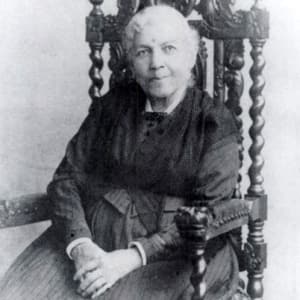
Victor Fleming
Academy Award-winning director Victor Fleming helmed many successful films, most notably 1939’s ‘Gone with the Wind’ and ‘The Wizard of Oz.’
Synopsis
Born in California in 1889, Victor Fleming's film career started in 1910. Fleming's first feature film as a director was When the Clouds Roll By (1919), and he soon became known for creating highly charged scenes full of dramatic action. Fleming's early films were followed by the classics The Wizard of Oz and Gone with the Wind (both in 1939). He won an Academy Award for directing Gone with the Wind.
Early Years
Victor Lonzo Fleming was born on February 23, 1889, in Pasadena, California. His struggling parents had traveled west after their Missouri home had been hit by a tornado. When Fleming was 4, his father passed away.
Fleming left school in order to pursue his interests in mechanics and auto racing. His skill with cars provided Fleming with a pathway to meet director Allan Dwan. Fleming ended up serving as a cameraman for Dwan, and eventually worked on several Douglas Fairbanks films. Fleming also did camera work for D.W. Griffith.
After serving in the Signal Corps during World War I, Fleming gained a coveted assignment as President Woodrow Wilson's personal cameraman at the Paris Peace Conference.
Hollywood Success
His wartime service completed, Victor Fleming returned to Hollywood and began directing. He re-teamed with Fairbanks on his first feature, When the Clouds Roll By (1919). Over the next decade, Fleming built up his resume with several other films, working with actors such as Clara Bow and Wallace Beery.
With The Virginian (1929), Fleming helped turn Gary Cooper into a star. That same year, the two men also collaborated on The Wolf Song. Fleming and his old friend Fairbanks then co-directed the travelogue Around the World in 80 Minutes with Douglas Fairbanks (1931).
In 1932, Fleming became a Metro-Goldwyn-Mayer director. At MGM, he helmed the popular romance Red Dust (1932), which starred Clark Gable and Jean Harlow. More hits followed, including Bombshell (1933), Treasure Island (1934) and Captains Courageous (1937).
It was 1939 that proved to be the most fruitful of Fleming's storied career. That year saw the release of The Wizard of Oz and Gone with the Wind, two landmark movies that had been directed by Fleming (Fleming was not the sole director of either production—only after each film had become plagued with issues was he recruited to step in and save the day).
Fleming encountered his own problems with the projects. While filming Gone with the Wind—and editing The Wizard of Oz at night—the demanding and often volatile Fleming suffered a nervous collapse and had to temporarily step away from the set.
However, Fleming's hard work on the two movies paid off, with both going on to become beloved classics. Gone with the Wind also won the Academy Award for best picture. Fleming himself received a best director Oscar for his work on Gone with the Wind (the film's other directors, George Cukor and Sam Wood, were not included in the honor).
Later Years
The 1940s continued Fleming's run as a busy director, even if the results were mixed. His films included Dr. Jekyll and Mr. Hyde (1941), starring Ingrid Bergman, Lana Turner and Spencer Tracy, and the Gable-headlined Adventure (1945).
Fleming's final film was Joan of Arc (1948), which saw him team up with Bergman and José Ferrer. Two months after the movie's release, Fleming died of a heart attack in Cottonwood, Arizona, on January 6, 1949. He was 59 years old.
Despite his sometimes thorny personality, actors consistently appreciated the strong-willed Fleming. "He got things out of me that were different from anything I had done before," Bergman told the Times of London in 1971. "What more can an actor want?"




